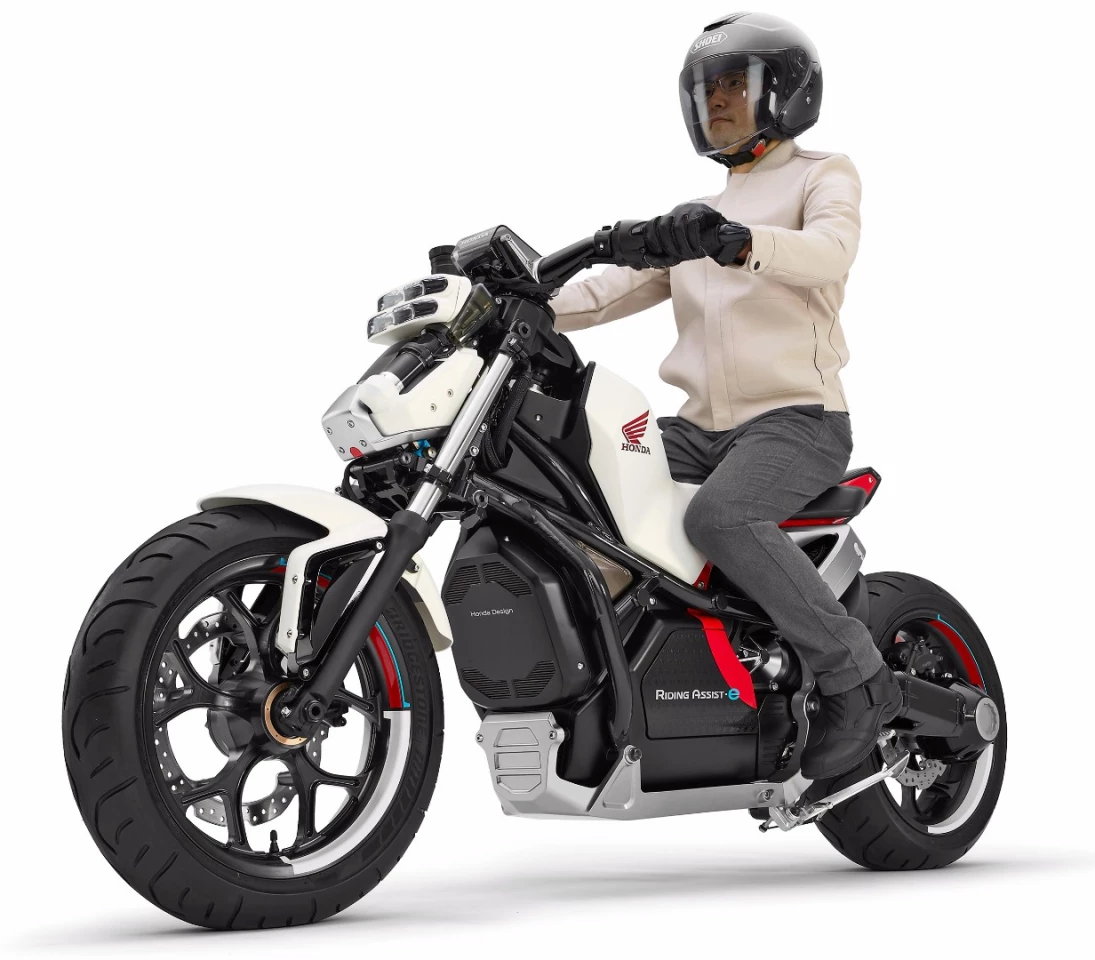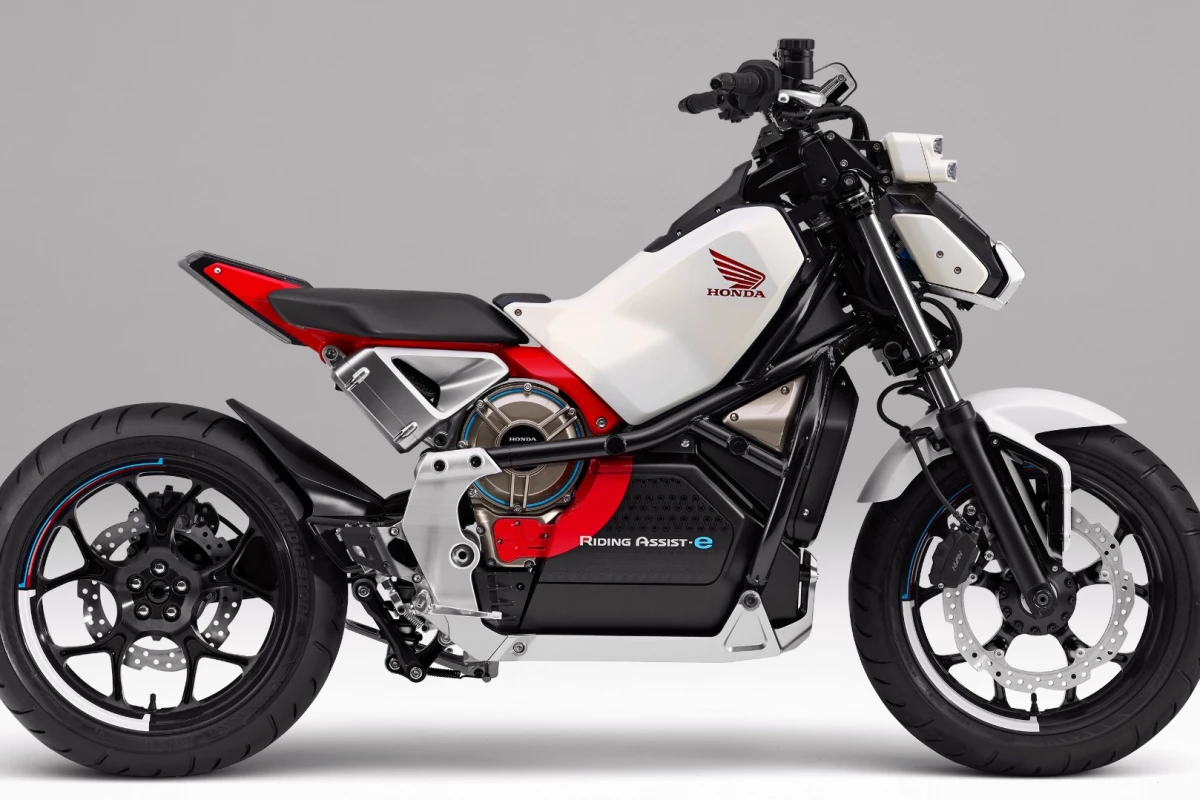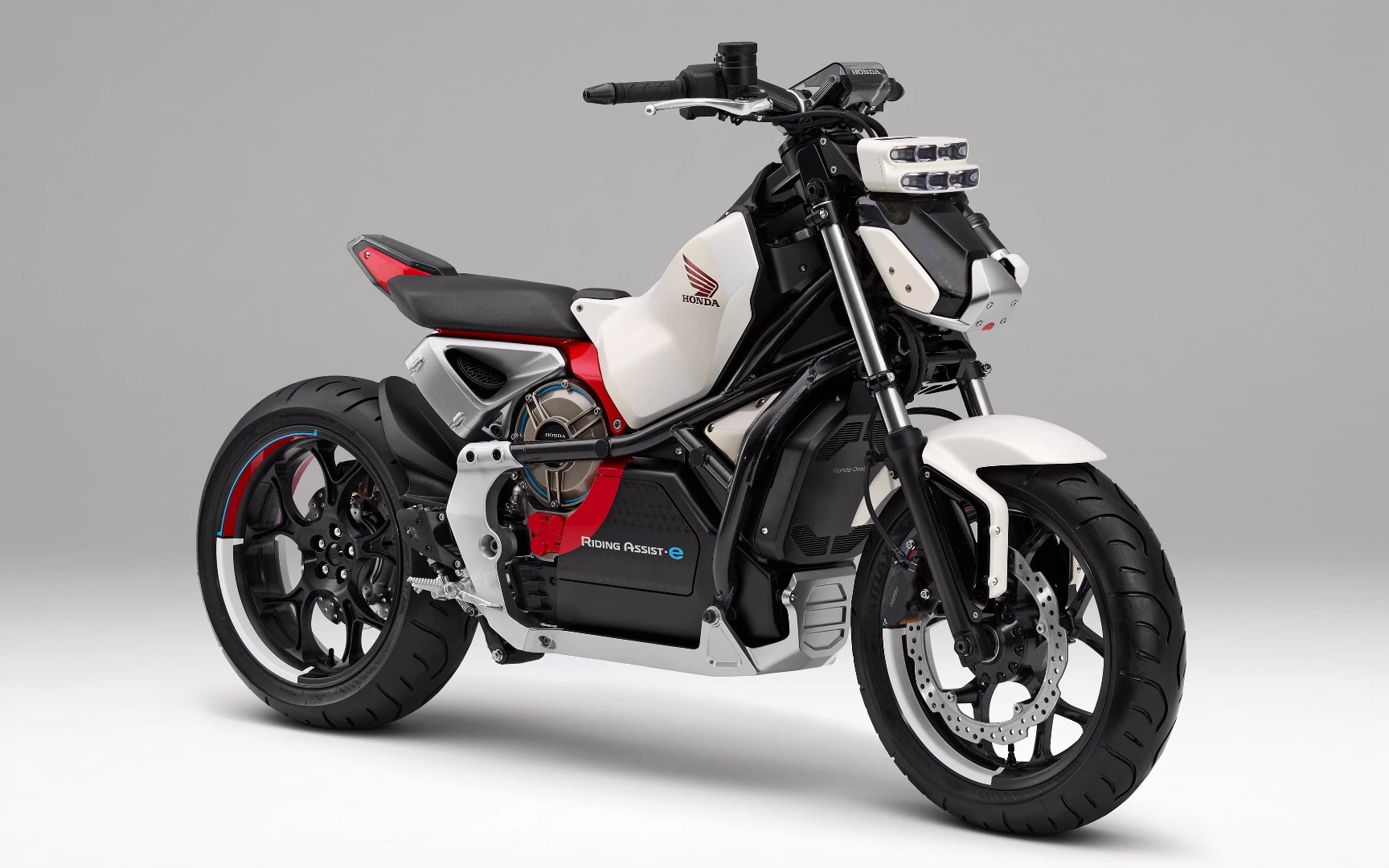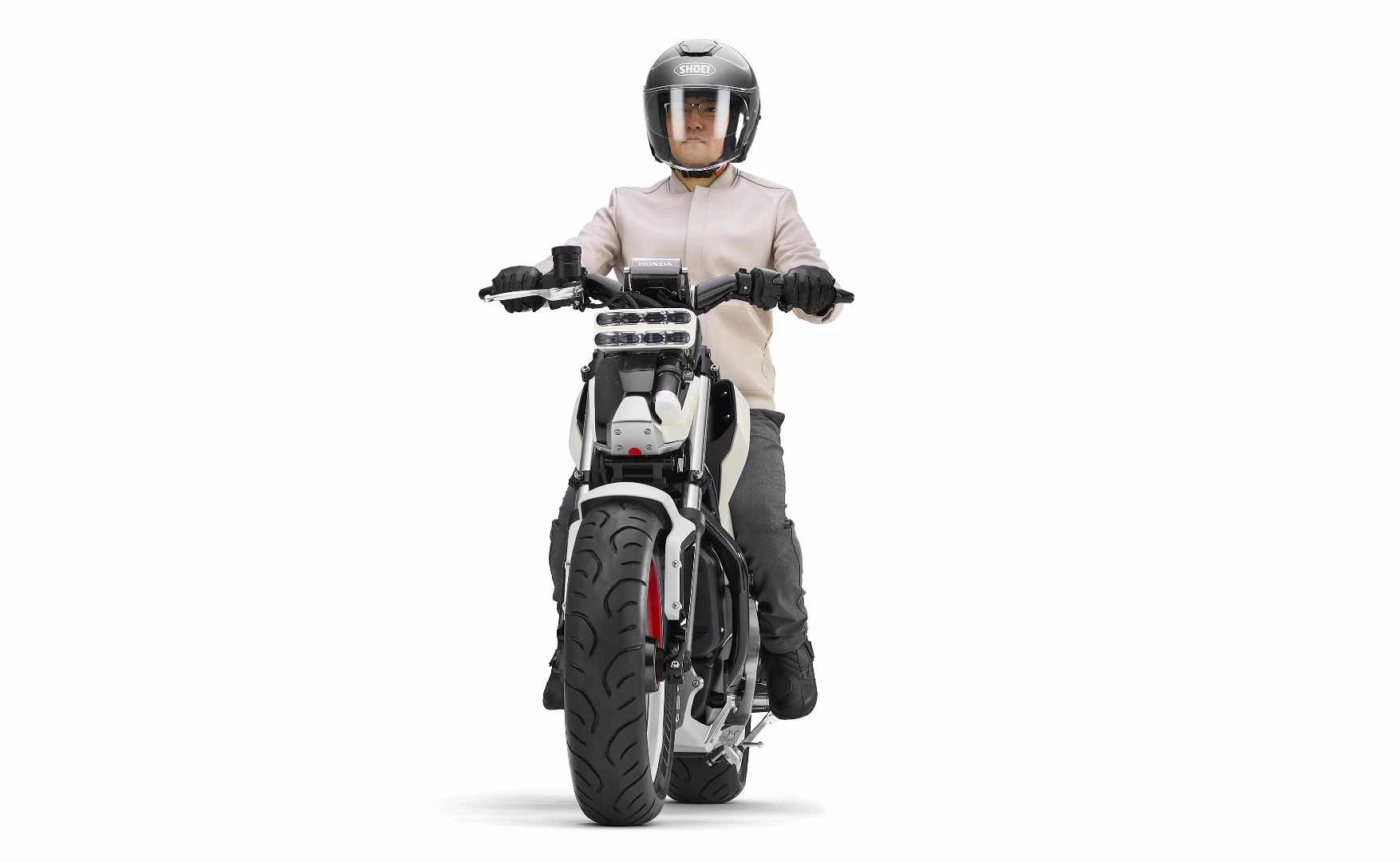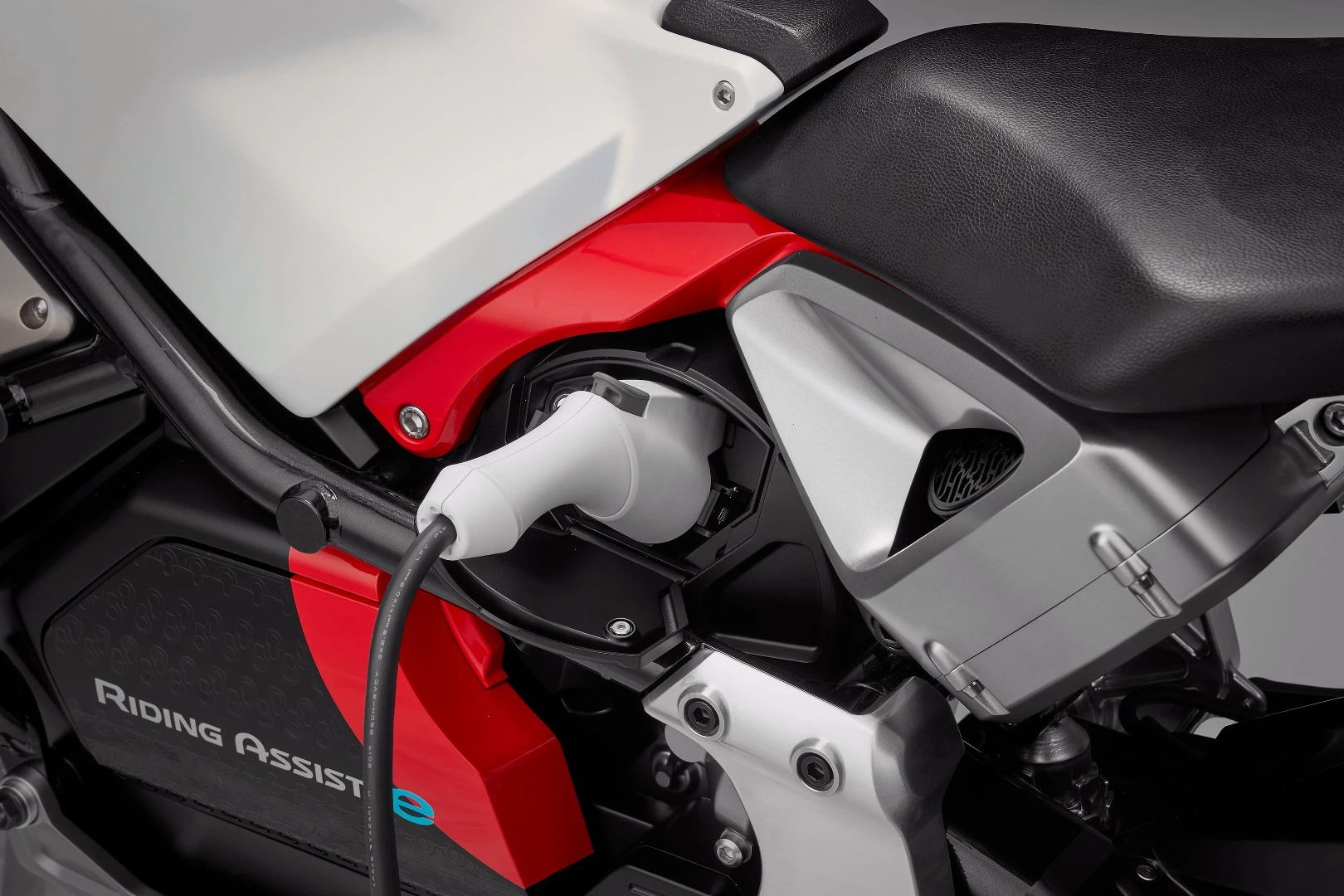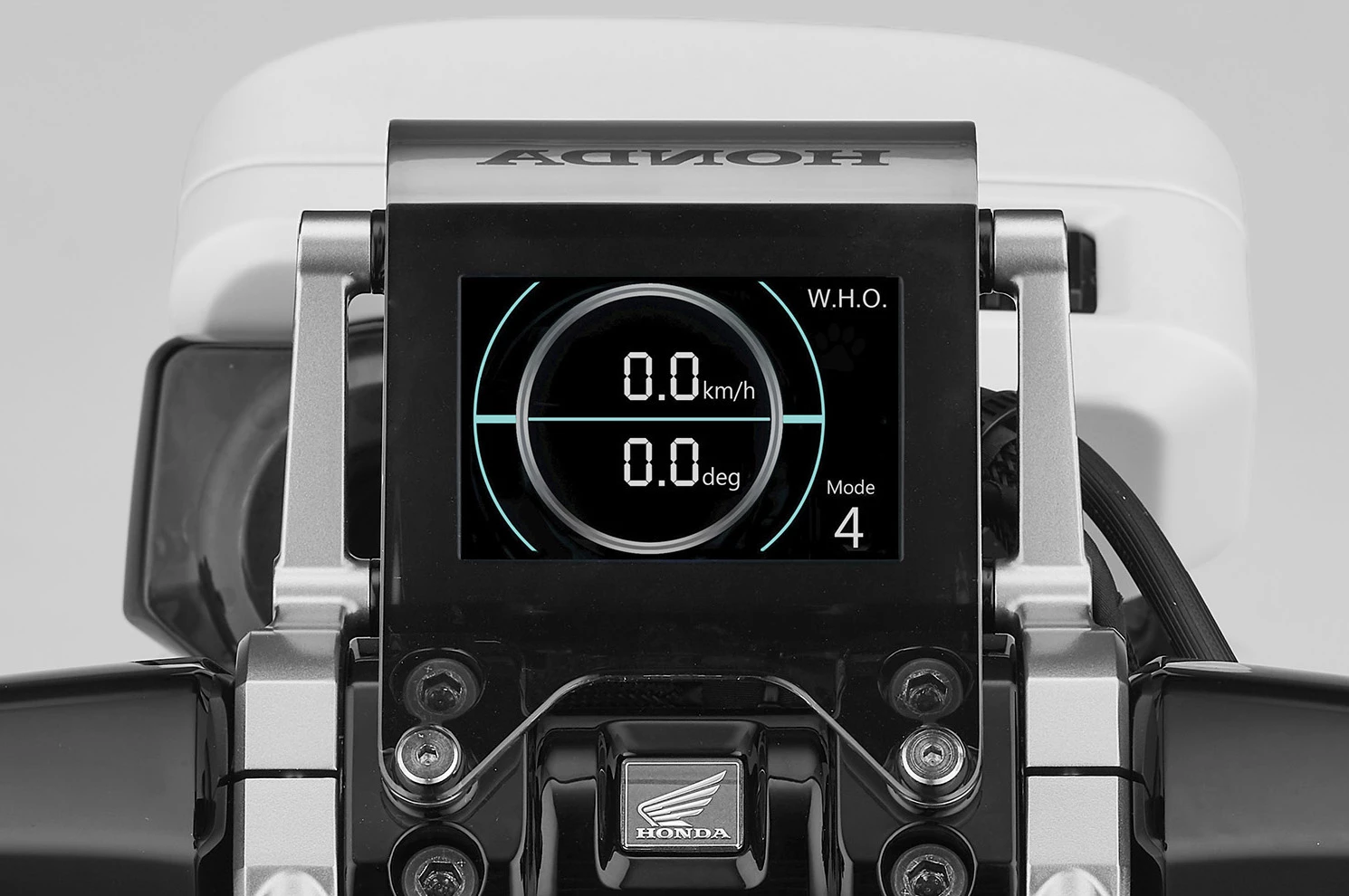Honda will debut a fascinating new motorcycle built specifically to help learner motorcyclists coming to grips with two wheels for the first time. The bike will be one of the highlights on Honda's stand at the forthcoming 45th Tokyo Motor Show, which runs from October 27 to November 5.
Dubbed the Honda Riding Assist-e, the bike is an electric vehicle with a low center-of-gravity and a very low seat height, but its most interesting capability is a self-balancing technology.
For those who ride a motorcycle already, the concept of your motorcycle deciding how far you can lean it over might seem counter productive. But Honda's balancing technology, which is apparently derived from its humanoid robot research, only balances the bike at "very low speeds" – something that seems to make perfect sense.
Few details have been released at this stage and it's unlikely we'll know anything more until the bike is shown to the media on October 25, but here's hoping that Honda will do more than just show the bike and ask us to suspend disbelief.
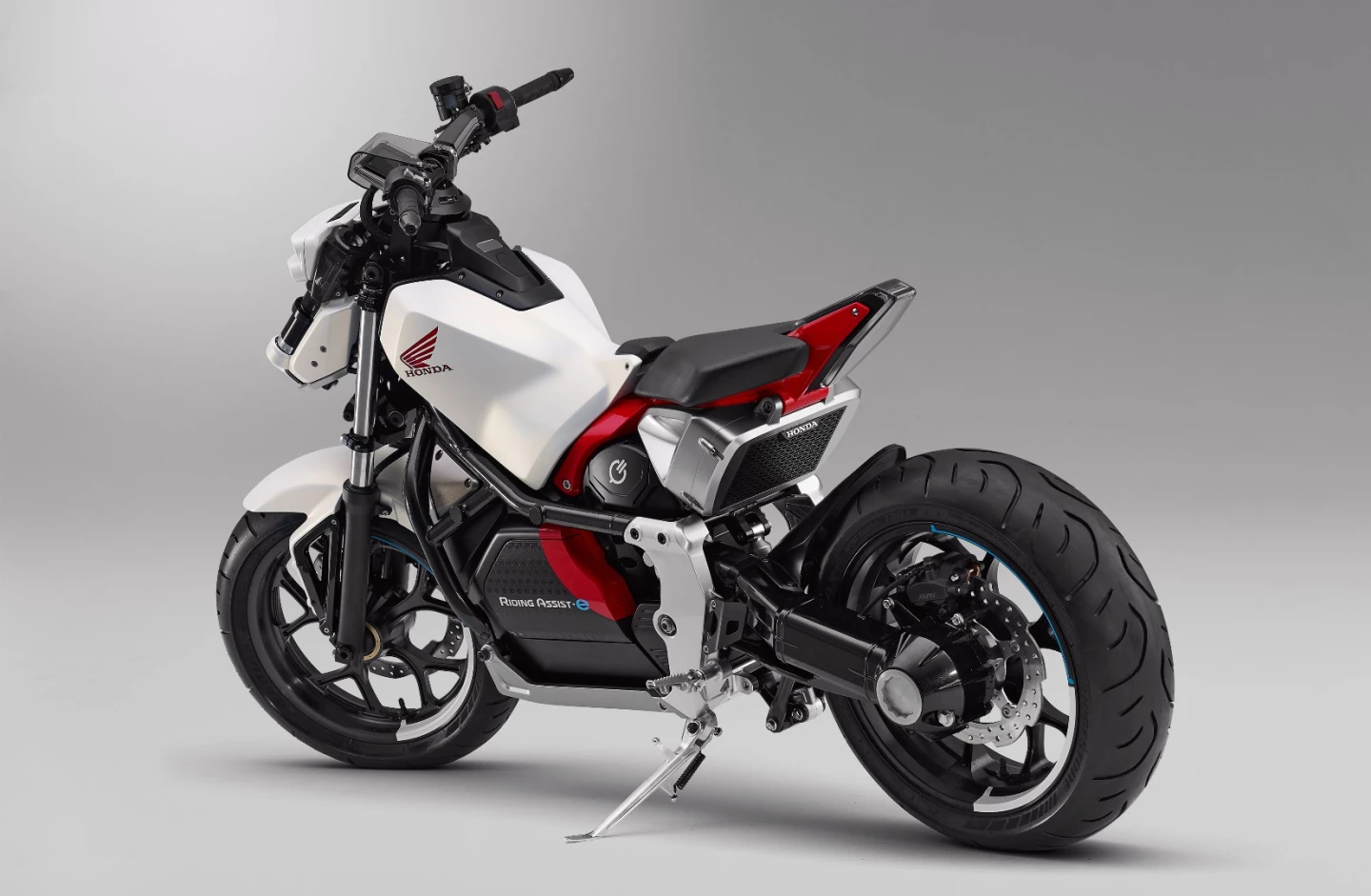
From the imagery that has been released, the gyroscopic self-balancing device appears to be located between the rider's thighs, and though it is likely that power is delivered via an electric hub motor, the single-sided swing-arm seems disproportionately large, suggesting there may be additional Honda engineering magic contained therein.
Similarly, the trellis frame appears to be far more robust than one would expect of a low powered learner bike.

A close look at the instrument panel in the Honda-supplied images also suggests the bike will be configurable for different levels of newbies – it is pictured displaying "Mode 4", so there will be at least four modes. The number of degrees of lean is also displayed on the dash, perhaps indicating the bike can be configured to intervene at a particular lean angle and deactivate at a particular speed.
All said, the unconventional appearance of the bike conveys it isn't your normal learner bike, and that promises something quite special when the Honda name is involved.
Let's hope so.
